When dice go bad, there’s only one thing to do with them.

Naturally, there’s a story behind why I buried this set of dice. It starts with the fact that I’m not superstitious about dice. No, seriously.
I’ve had precisely three sets of dice that rolled oddly. The first was a set of percentile dice back in high school that rolled low. Really low. I bought them for Call of Cthulhu at ConnCon, a little convention in Connecticut, and they turned out to be perfect.
In CoC, the lower the roll, the better. Not only did these babies roll low, they consistently rolled 01-05, which is a critical success in CoC. After the con, I mixed them in with my other dice — biiiig mistake. I’ve never been able to figure out which 2d10 they were again.
I also own two d20s that roll high more often than not, although not so often that I consider them “broken.” They came out of a Bowl O’ Dice pull at GenCon a few years ago, and their consistency is such that when I GM, I often switch away from them after a few rolls.
This happens most often in D&D, where I don’t fudge any rolls at all. In combat, these dice can be lethal.
And then there’s the set that’s now buried in my backyard. For the last two months straight, I’ve used them as a player in my group’s ongoing Trinity campaign. My character is a hacker, and he rolls 10d10 for hacking checks. In Trinity, a 7 on a d10 counts as a success.
Rolling 10d10, I consistently got one or two successes, night after night, game after game, for two months straight. It wasn’t just hacking rolls, of course — those were just the most dramatically shitty rolls, since they were made with such a huge pool.
These dice, in other words, aren’t just bad. They’re projectile-vomiting, masturbating-with-a-crucifix, possessed-by-the-Devil bad.
My gaming group suggested I bury them, so that they could never blight our sessions again. So I did. Thanks, guys!

Sleep, little dice. Sleep. It’s all better now.
Have you ever had dice like this, either as a player or as a GM? As a GM, what do you do about them?
Update: Alan from RPG Shop emailed me with a very generous offer: a free set of 10d10 from his site, because “Life is too short for bad dice.” I went for the black/white Nebula set, more or less the polar opposite of the dice I buried. Thanks, Alan!
Update Part Deux: Alan’s package arrived today, and it rocked. Unasked and unannounced, it included not only the Nebula dice, but another set of 10d10, an RPGNow! d6, a flaming d20 T-shirt and a handwritten note that read “May you crit to excess!” Totally, totally awesome — thank you again, Alan!
I couldn’t resist making my first roll of the new set on the spot. Here it is, with successes in the bottom row. This bodes well.



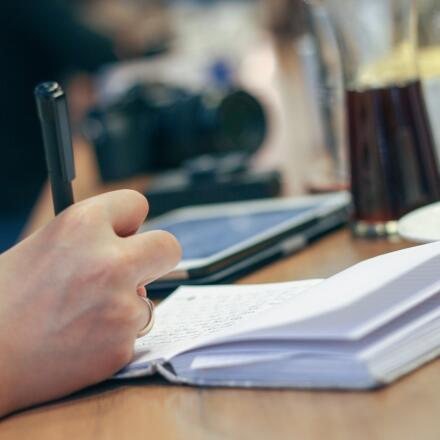




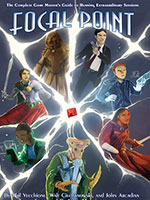
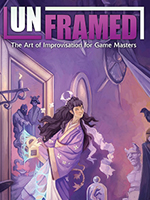



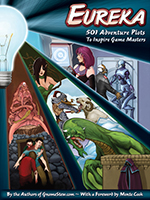


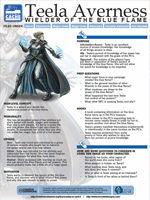

We gamers tend to be a superstitious lot. While I myself put all my dice to 10 (or the highest on the dice) when not in use I don’t think I would ever bury dice. There are a lot of reasons that a dice could roll low. Bad cutting (dice are cut like gems, only mass produced) or dropping results in soft edges, constant rolling wears them down, their centers are off balanced, etc. Which is a pity because they are suppossed to represent random chance but are so rarely random.
If they were random the odds are actually surprising. We were recently running numbers on d10s for our system test and with 10d10 the chances for getting a number of successes at df=7 are amazingly low in some cases. We just think of 10 dice as a lot, but based on the way they roll and probability it’s not as garaunteed as we’d like to think.
99.4% One Success
95.4% Two Successes
83.3% Three Successes
61.8% Four Successes
36.7% Five Successes
16.6% Six Successes
5.5% Seven Successes
Ah, dice superstitions. Much like John, I always rest my dice on the optimum number while playing, whether that’s high or low. I’ve threatened my dice with the Foreman grill now and then when they misbehave. One thing a few friends have done is a sort of punishment/reward system of “reinforcement”: set a die on its worst roll (e.g. a 1 on a d20) and nuke it in the microwave for a second, then set it on its best roll (e.g. a 20) and put it in the fridge or freezer for a moment.
It sounds ridiculous, yes. But it’s funny the sort of superstitions that can develop around dice.
I’ve only ever had one superstition, and that’s been mentioned – training the dice to roll what they should by resting them on the best roll.
Beyond that, if a die rolls crap, I’ll pull another die. With my endless bag o’dice, something only long-time gamers really understand, I’ll never run out. That said, I have hurled dice against walls with much force, but what gamer hasn’t?
Of course, the dice could have been biased from long use or bad manufacture. The best way to tell is to drop them in a glass of water and see how they react. I had a set of dice back in the late 70s that were so bad that when I did this test, in less than 1/3 of the way down into the water, they had quickly spun to a number and stayed there all the way to the bottom. They were quickly retired.
I’m pretty boring, but the above testimonials about threatening the dice and setting numbers to their maximum are familiar. I haven’t gotten to microwaving them yet…
I retired Koplow 20 sided d10s after noticing that they seemed not very random, performing a random test, which showed an apparent propensity for rolling certain numbers, and then noticing that instead of what I usually saw for dice where each pair of numbers were on opposite faces (the two 1s opposite, the 2 2s opposite, etc), the Koplow dice has two pairs that were ADJACENT! (2s and 7s as I recall), and other pairs were separated by just 1 face (thus easily in the same hemisphere). And all the numbers that came up more often than expected in the random test were in the same hemisphere (and I think 7s were the most common roll). Thus a poor die design combined with a slight imperfection resulted in a HIGHLY non-random die. With pairs on opposite faces, if the die is more likely to land on one hemisphere, that hemisphere has a full distribution of all 10 numbers (though whatever number is in the center of that hemisphere may still come up more, it could be a pretty small deviation, but that deviation is doubled (or more) when both instances of a particular number are in that favored hemisphere, especially if they happen to be near the center, and adjacent).
What I would have considered doing with those d10s is rolling each one say 100 times, noting down how often each face came up. If you really were almost never getting more than 2 successes, chances are several of the dice were weighted such that 7,8,9, and 10 were way less likely to come up. Though if you weren’t getting 0 successes very often, it’s also possible one of the dice had a propensity for rolling a 7-10.
Frank
Just to let you know, plastic dice are NOT cut. Plastic dice are injection molded. If you get your hands on “Raw” sharp-edged dice that haven’t been inked or polished, you’ll see that there are mold lines and tabs where the plastic was injected.
I don’t know where John got the idea they were cut. Maybe he’s seen stone, bone, or wood dice being cut. Which makes sense: We don’t do a lot of injection molding with jade and amethyst.
As the the lucky/unlucky dice, well dice get miss-cast all the time. Most companies have fairly good quality control, but sometimes something weird gets through. If you have bad luck, inspect your dice closely, they might need to be buried. If you have good luck… just continue to blame it on good luck.
If in doubt, sell them on eBay, as yet another “haunted” item of grossly inflated value. 🙂
Re: microwaving. Torture is wrong, m’kay?
You do realize that the next time it rains, those are going to grow into a dice bush.
What’s fun is making loaded dice on a rapid prototyping machine. I’ve never used them in an actual game because that’s being an asshole, but it’s super hilarious just to make them.
John: Are your probability results available anywhere? They sound like they’d be useful for all sorts of things, although I can understand if they’re propietary dev tools for your system.
Zephyros: My current GM has tortured his dice in the past, holding them over an open flame to teach them the error of their ways. 😉
Mercutio: The endless bag o’ dice is a wonderful thing, isn’t it?
Rick: I love the idea of the water test — I’ll have to give that one a shot!
Scott: Familiar personally, or familiar from your group?
Frank: Rolling 10d10 100 times and noting the results sounds like waaaay too much work! But it would be a lot more scientific than burying them. 😉
George: You know, you might be onto something with the eBay idea… 😛
NelC: It’s not torture if the administration doesn’t define it as torture…right?
BOB: I was a bit concerned that the dice would contaminate the yard — but then I realized that since they suck, they wouldn’t contaminate it very much. 😉
perianwyr: You have access to a rapid prototyping machine? Cool! How do you make loaded dice on one?
As a GM with a lovely board separating your dice from the view of the players the numbers can be whatever you need them to be.
BTW, I do have a black d20 of death. Never fails when I need to kill a character for fun.
We have a habbit of throwing our cursed dice down the hallway. But the dude whose house we crash as has moved into a new place, so we may have to take up your idea since he probably won’t want die pock-marks peppering the house he just moved into.
“Frank: Rolling 10d10 100 times and noting the results sounds like waaaay too much work! But it would be a lot more scientific than burying them.”
Could have been worse. Don’t you have to roll a die number of sides squared to do that test? What if it was a bundle of d20s? Or a few d100s? 😀
Crazy Jerome: depends on just how strict you want to be. I figure 10 rolls per side is sufficient to get an idea if the die is way out of whack. If the different sides come up within 1 or 2 of expected, you’re die is probably ok. If one or two numbers are out of whack, you might want to continue to the proper statistical quantity of rolls.
Frank
Having taken some QMTH in college I can tell you that 10 rolls of the die would be grossly insufficient to decide if it was faulty or not. 100 rolls would actually be a proper sampling size to get an idea as to whether or not the die is defective.
in the far future, a graduate student of archaeology thanks you.
That’s 10 rolls per face. 100 rolls for a d10. 60 for a d6.
On squaring the number of sides – that doesn’t seem to be necessary for a chi-square test, at least not according to the article “Be thy die ill-wrought?” in Dragon 78. It claims you need only roll at least 5 times the number of sides, but 10 is better, and more than 10 would be even better.
Frank
Well… see, your problem was that your dice were on strike. After all, you were playing _Trinity_… and the dice felt bad that the game had lost its original true name: _Aeon_.
Your dice will be happy again when you play _Transhuman Space_, which is a much better transhumanist/post-cyberpunk game.
I have some friends that “warm up their dice” or “roll some to see which roll higher”. I’m completely against this. Despite knowing that “dice don’t have memory” and every chance of rolling a die is exactly the same as those before, I’ve seen more than a few people “waste good rolls” during this “warm-up phase”.
Save all the good rolls for the game!
I have a method for armour rolls in Blood Bowl. Don’t know why but it works, as a result my halflings just wont die. Go figure.
Mike:
Why would they waste good rolls, if the chance on every roll is the same as the last roll? The odds don’t improve as you roll the dice, based on your hypothesis.
Personally, I believe you -do- have a set number of good rolls per every hundred, and although you can’t predict when they will occur, if you get them out of the way early, you’re just improving the odds of poor rolls when you’re facing down a saving throw over a bottomless pit.
But that’s just me.
[/2 cents]
Now that is terrible dice karma!!
I’ve found that you have to like your dice for them to like you, oh yeah, and if you have a negative view of your dice, they’ll get back at you in poor rolls.
So love your dice! lol
Martin, did you line up the rest of your dice and make them watch this ceremony? 😀
Docrailgun: I’ll talk to my GM about switching campaigns, I’m sure he won’t mind… 😉
Escalla: I loved these dice, and I stuck with them for the first month with no complaints. Nothing but love…until they turned bad.
Crazy Jerome: Nope, I didn’t make my other dice watch — but man do I wish I had. What a great idea!
While GM-ing at GenCon in 2000, I saw a Full Thrust player with intensely bad luck. The player, Hobe Rupe, is famous for horrible dice rolling. The game uses nothing but d6s, and you have to roll high. Through much of the game he was rolling mostly 1s and 2s. I heard about his legendary bad luck, but this was the first time I’d ever seen it demonstrated.
At the end of the game he took his dice, a newly purchased “brick” of Chessex six sided dice, and threw them into the garbage. Apparently he did this earlier in the con but retrieved them. This time he left them there for real.
I’m not a superstitious man, but I didn’t bother retrieving them. Neither did any of the folks playing with him.
Heh, I saw this elsewhere. I guess word’s getting out about your fantastically horribly rolling dice.
However, your dice still aren’t that bad: I’ve had ones where I’m rolling d10’s all night long (d10 based system, including hit locations) and I never get above a 2, though I’ll easily roll 300-400 times with a given die. I’m scavenging others dice, and still never getting more than a 2. Everyone else I know will get random distributions on those same dice, but I always get either 2 or 8-9 exclusively. 10 on exceptionally rare occasions.
Such is my bad luck. However, I will rarely die IC, as. I will only have characters suffer damage until any point of damage taken would kill them.
Any suggestions for improving my die rolls? (Might I mention that this effect seems to apply for die roller programs as well?)
Sorry for the double post, but…
When I mention high numbers, it’s always associated with a check involving rolling low. In short, I always get the numbers I least want in the situation. Typically, that’s a 2.
I’ve got a d20 that I first charred with a torch lighter, then struck with a hammer … on concrete. Now it’s a two-sided die. Yes, I still have it, as a lesson to the other dice.
There is a way round this guys, do as I do, and NEVER buy a dice, always use the DM’s dice, or better still get him/her to roll the dice for you. I hate dice rolling gets in the way of good roleplaying, so good, bad or pure ugly dice don’t worry me, good and bad roleplaying are more important with plenty of the former and none of the latter (life’s too short). As an addendum (and to complete the idiom, if you ever come across an ugly roleplayer just promise me – no one will end up burying him/her/it in a garden…
If you just play with d6s, get retired casino dice. Most casinos replace the dice once a shift (every 8-hours or so) and they’re guaranteed to be perfect, pretty much. Someone else has already shelled out the big bucks to ensure that.
Inept – you really need to try Dogs in the Vinyard and see how dice rolling totally can facilitate awesome role playing. And it totally doesn’t work for the GM to roll your dice for you (well, I guess you could have him roll the dice, but no way can you get out of deciding which to use for raises and sees).
Frank
Having someone else roll my dice sounds odd to me. Plus it’d be more work for the GM. Definitely not an approach I’ve heard of before, in any case. 😉
I resolutely REFUSE to believe in luck, or that I have, for my entire life of playing RPGS, consistantly bought bad dice. However, during RPG sessions, I rarely roll within double digits on d20s, and over two on most other dice. To this end, I’ve become a pretty hardcore min-maxer to compensate, but I still end up with poor totals because, of course, a good chunck of one’s bonus is dependant on one’s ability scores… for which you roll.
Of course, if I switch systems (to white wolf for instance) I can eliminate the horrible skew of my poor ability score rolling (scores usually range from 4-13) and instead create horribly min-maxed characters with die pools in the teens… So I can critically fumble three times in a row.
So, then it’s on to wargames which we all know are about strategy and army building. After all, you’re rolling a pool of 30 dice. How many can POSSIBLY be ones? Well, it seems that enough can be ones that my unit of minotaurs fails completely to wound the unit of goblins into which it charged and then fail to roll high enough on their armor rolls to avoid the damage the goblins do to them, then roll too poorly to avoid routing, then roll JUST high enough to flee right next the central column of my army where my general and elite troops are positioned, while not rolling QUITE high enough to avoid being overrun and slaughtered to the man, which is when my heart of woe, picked because on a minotaur champion the explosion it causes on it’s bearer’s death is truely awe-inspiring, goes off…. My general didn’t make HIS armor save either (after all, he needed to roll the nigh-impossible result of 2+ on a die 6)
So now I’m a DM. Everyone enjoys my rolling now!
I have a good friend who has atrocious luck. His luck is so bad, that you can’t let his dice touch yours (Chris Valentine. If you game with him, beware). At the end of a session once, his dice got mixed with a big tin of general dice, and those dice all seem to suck now. The one good point of his luck, is that it’s like in “Knights of the Zodiac” or “YuGiOh”. He fumbles, misses, critical fumbles, until the last moment, and then whips out critical hits and max damages to end the scene. That good at the end luck didn’t seem to catch the dice in the dice tin, though. They just can’t get a good roll.
Frank,
I firmly believe that getting the DM to do all the dice rolling and having him/her explain the results of you actions is the closest thing to story book roleplaying you will ever get to.
Lets take an example. Straightforward D&D 3rd Ed. You are a fighter with mighty sword clenched in one hand and sturdy shield in the other. You *know* your ability because you’ve trained hard and fast under your martial tutors (ok so read this as you know your base attack and your ability bonus).
You have only your final, challenge to pass before leaving the training academy and taking your place as a gaurdsman, the challenge awaits…
Style 1
Stepping into the fighting pit you see a slim man with simple leather armour and two daggers, one in each hand. Fear grips you and you firmly push it to one side as you analyse your opponent, he is slight, but his silky smooth moevements hint at real speed, his casual tossing of the dagger in his right hand suggest he might throw it, what do you do…?
Circling round your opponent he snaps his hand forward and you are slow to react, the dagger thumps into your chain armour by-passing shield entirely, the strong chain links hold but the bruise will be there for days, but you have to focus on your opponent he has follow his dagger cast with a tumble to one side and a quick dash to get inside your defences, he is incredibly quick, you swing wildly to keep him a bay, somehow another dagger appears in his hand and he presses his advantage, anticipating his moves you fient to the right and bring your sword round in a huge sideways swipe, the blade cuts through the light armour and flesh and your lithe opponent screams in pain doubling over trying to contain his innards. As clerics run forward you cannot believe that the match is over…
Now lets analyze that short fight in game terms…
Style 2
Round 1 – fighter meets theif, fighter looses initiative and theif throws dagger at flatfooted fighter, minimal damage scored
theif dances away and draws second dagger
Round 1 – fighter attacks and misses
Round 2 – theif feints seeking to sneak attack and misses
fighter attacks again, firm hit, thief takes damage
Combat ends as theif surrenders.
Which style would you rather play in? why role dice when the DM can simply descibe the actions of your charater based on abilities that you know!
All I can suggest Frank is that you try it for one session, it requires a good DM with a solid imagination and a flare for telling the tale, you will be amazed at how much it helps the roleplaying, even more so if he also hides hit points and describes damage done to you! Try it and enjoy!
Inept,
As a GM, I have to say that I’m completely against you. Want more description? Contribute some. Roll your own darn dice.
Out of 13 consecutive rolls on one D20 (otherwise normal up to that point and not known to be “funny” in any way), I rolled NOTHING above a 6 (which was unique, along with the solitary 5 result, so it was really 11 straight rolls under 4…)
I then picked up four more D20s, and it was a further 8 rolls with them before I broke 10.
Needless to say, none of the dice involved survived their treachery. An entire game session completely ruined because of dice. And don’t lecture me about “dramatic failure” — one critical failure (or even two or three) is dramatic, and can be fun. TWENTY-ONE consecutive failures across all rolls in and out of several combats is PERSONAL, I don’t care what you say.
Look at it this way: if you were betting on the flip of a coin, but could only choose Heads or Tails every 20th flip, you’d expect to break even, or near enough, right? You certainly would call the flipper a cheat if you lost EVERY SINGLE FRICKIN’ TIME…
When my dice go bad, I go with the Pile of Shame theory. Under this, a single poor roll is enough to get the offending dice pushed to one side, into a heap which grows to sadly epic proportions most days, usually with an exclamation involving the words Pile of Shame, from where they will not to be used again that session. Or next session if I remember them.
It’s pretty much the Endless Bag o’ Dice mentioned earlier, but involves shouting “Shame! Pile of shame for you!” more often.
I can confirm that… Though I’ve never seen him empty the bag, we’ve had at most 4 groups of dice:
1. The Bag
2. The Pile Of Shame
3. The “Haven’t Failed Yet” Dice
4. The “Not to Be Trusted” Dice
Group 4 mostly consisted of those dice that rolled really well for a change.
Group 2 produced “camping in the sea” as a good idea. And it is – no one expects it, you have water and food on hand…
Cliff,
Suggest you and Frank get together and try roleplaying rather than dice roling, just try it one time and then tell me I’m wrong…
I have been reading this thread with real interest I just cannot believe folks are so hung up on roling dice, you guys wanna role dice rather than roleplay try Yahtzee!
If the dice make so much negative difference to the game then simply remove them altogether. Obviously I must be speaking some sort of heresay given the comments.
Cliff, Inept, let’s leave the rolling dice vs. not rolling dice issue at that, unless you can keep it from being personal.
They’re both valid styles, and you’ve explained your points well.
Martin,
dont think it was in any way personal, I wasn’t offended and I hope Cliff/Frank weren’t by my comments, I take on board that where the game has a concept of ‘raises’ then the dice rollinng itself is essential. I’ve played one or two such games and enjoyed them. I think all the comments made were interesting but – as you say, this thread might have come to a natural end. Brigid threads are quite interesting if folks havent checked them out, well worth it.
Thanks for the links, Brigid! 🙂
Inept: No worries — it was hard to tell, so erred on the side of caution.
I remember a game in which, the 20-sided I was using rolled exclusively 1-2, or 18-20, thus either critically fumbling or hitting on attack rolls, and either sucking it up or blowing away skill checks. Nothing in between for this guy!
After a while, my DM asked me to change to *his* 20. After four rolls of 20 in-a-row with my own, I had no objections, as I correctly presumed that the karmic balance was soon to come, and that my 20 would be rolling a bunch of ones to compensate for its generosity.
Thus, on my next few rolls, I used both my die and my DM’s die simultaneously, calling “your die” with each roll. (This, as his die is “called”, it means that my die is being rolled just “for kicks”.)
My die did, in fact roll on its low end for the next couple of rolls, two ones, and a two. Of course, this didn’t matter when my DM’s die rolled a 16, an 11 and a 19. 🙂
Naturally, he took his die back promptly and after that point, insisted that I use my old green 20 again. Alas, it has been lost to the mists of time, and may never return again. This may be a blessing, but I’d still like to find it: If for no other reason than to make other DMs (and players) cry.
-X|S
X|S, that is truly bizarre — it’s definitely too bad that you lost that die! 😉